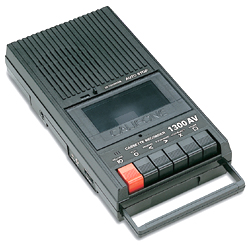 Introduction
Introduction
The home-computer of the early 1980’s was a low-cost device. It had to be. Nobody knew if it was a fad or was going to take off. Many were bought by parents for their kids. A retail price of several 100’s of dollars would put many people off.
To keep costs low, practically all computer manufacturers made use of products that people already had in their home. The TV was used for the display, and a small tape recorder was used for data storage.
The TV is still around, but the low-cost tape recorder is not.
Functional Description
In this build thread I am going to design a solid-state tape recorder. I won’t be using any fancy features. The solid-state tape recorder will work in exactly the same way the original did. There will be a counter, a play, a record, a stop, a fast-forward and a rewind button. You will actually have to sit and wait for the tape to rewind.
You can’t stick your finger through one of the holes in this solid-state audio cassette and spin it around to manually to rewind it, but hey… that’s progress for you.
Initial Calculations
My first idea was to simply same the programs as audio on a flash or EEPROM memory device. However, a quick calculation shows that a play-time of 45 mins would require:
45 [min] x 60 [sec/min] x 8000 [samples/sec] = 20 MBytes
Way too much memory for a simulated cassette tape costing less that $2 in 1990.
We clearly have to save our programs as memory images instead of audio tracks. So we get to the final design:
- Standard cassette-tape interface.
- Data saved from the computer will be demodulated by our tape recorder and stored as a memory image.
- Memory images are modulated before being sent to the computer.
- A USB interface will be included for uploading of memory images from a PC.
Design





 09/02/2010
09/02/2010
Leave a reply